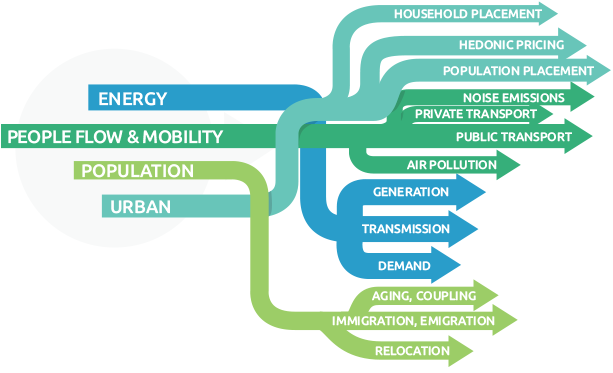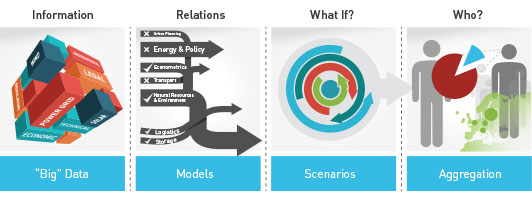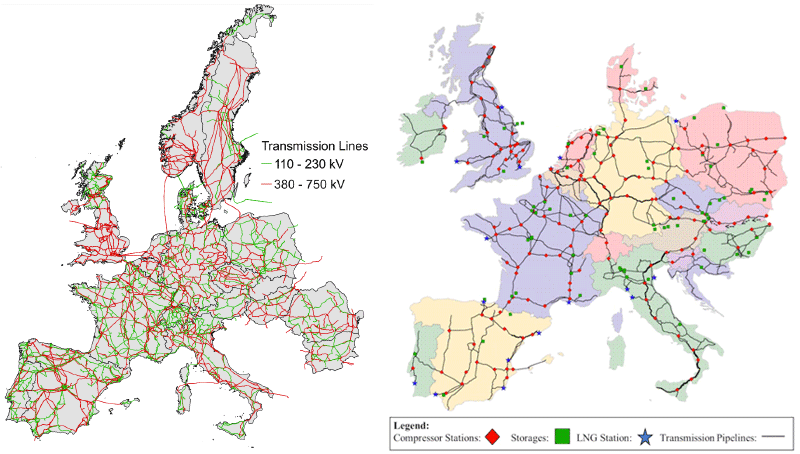Energy, Economics and Policy
LEC’s EnerPol framework is composed of high-resolution, system-wide modules for electricity, gas, and heat networks, and for urban planning, Figure 1, that are linked in order to enable comprehensive data-driven analysis, Figure 2. The geographic coverage of EnerPol includes most of Europe, substantial portions of USA and Canada, and parts of Africa and Asia.
For central Europe, Figure 3, the modelled transmission grid has 1’900 individual transmission lines (220, 380 and 400 kV) with a total length of 70’000 km; 3000 individual conventional and renewable power plants are geo-referenced in EnerPol’s framework. The European gas network model, Figure 4, is comprised of 76'000 km of pipelines, as well as all compressors, gas storages, and LNG stations. For the electricity and gas markets, hourly chronological simulations are undertaken. In the electricity market model, generation, transmission and demand are modelled at the level of substations with dispatch that is optimised on the basis of physical constraints and economic considerations. In the gas market model, fixed contract or available gas supply is modelled, all flows in pipelines, at nodes & in storage are physically simulated, and the gas demand distributed either to the coupled electricity generation or to other end-users. The distribution grid, which is directly connected to individual buildings, can be modelled in EnerPol; in this regard electricity and heating demands of households, commercial and industrial buildings are precisely modelled.
Furthermore, in ongoing work, EnerPol is being applied to assess the impacts of urbanisation on mobility and energy in the built environment. EnerPol’s holistic, comprehensive framework therefore allows for the data-driven analysis of a broad range of scenarios related to power & energy mixes, economic transformation, urbanisation, market performance, investments, and impact of policy.



